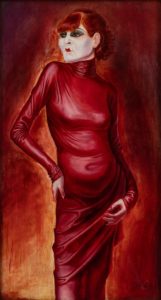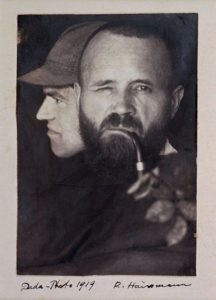Pompidou Museum: what for ?
The Pompidou Museum, also called Georges Pompidou National Center for Art and Culture (CNAC) is a multidisciplinary establishment born of the will of President Georges Pompidou. It is also commonly known as the "Pompidou Center", or more familiarly as "Beaubourg".
It si dedicated to modern and contemporary creation where the plastic arts are to be found alongside books, drawing, music, performing arts, activities for young audiences, as well as cinema.
It is located in the "Quartier de l'Horloge", west of the "Quartier du Marais", 150 m from the Paris Main City Hall, 500 m from the Sainte Chapelle, the Clock Tower, Notre Dame de Paris and the Ile-de-la-Cité, 700 m from the Louvre Museum.
The National Museum of Modern Art
It houses the National Museum of Modern Art, a world reference for its collections of 20th and 21st century art. The works of major artists are displayed chronologically in two areas: the modern period from 1905 to 1960 (Matisse, Picasso, Dubuffet...) and the contemporary period from 1960 to today (Andy Warhol, Niki de Saint Phalle, Anish Kapoor...). In addition to these permanent collections, exhibitions of international renown are organized all year round on the top floor, from where the panoramic view of the center of Paris and its rooftops is breathtaking. One can spend entire days visiting the permanent exhibitions and the numerous temporary exhibitions, eating at the Georges restaurant, learning at the Public Information Library and strolling through the store. At the foot of the main building, in the outdoor piazza (the square in front of the main entrance), the Brancusi studio presents a unique collection of works by this major artist in the history of modern sculpture.
Avant-garde building, construction and controversy
The building is a 20th century architecture, recognizable by its external escalators and its huge colored pipes. The construction of this building-museum is based on a new concept which consists of rejecting the "load-bearing" structure outside the building in order to keep the interior of the building totally free, adjustable by level.
On July 15, 1971, the jury of the international architectural competition, chaired by Jean Prouvé, decided to select, among the 681 projects presented, that of the architects Renzo Piano, Richard Rogers and Gianfranco Franchini. On February 2, it was opened to the public 1977.
The architecture of the Pompidou Center is of course highly controversial: pipes, electrical staircases, metal walkways, everything that is traditionally hidden is here ostensibly shown for all to see. The center has been nicknamed "Our Lady of Piping", or "the Pompidolium". It is mocked as an "art shed", a "gas factory", an "oil refinery", a "cultural catch-all" or an "avant-garde wart". It is stigmatized as an expensive facility that absorbs, in the year of its inauguration, one hundred and twenty million francs, that is to say one seventh of the budget of the Culture of France. But the center and its controversial architecture were also a great public success.
The Pompidou Center, in the center of Paris
The Centre Pompidou is located in the Saint-Merri district, in the 4th arrondissement of Paris, between the Halles district, to the west, and the Marais district, to the east. Inaugurated on January 31, 1977, the Centre Pompidou welcomed 3,273,867 visitors in 2019. In addition to its collections, it also houses important galleries for temporary exhibitions, theaters and cinema, and the Bibliothèque publique d'information (Bpi), the first public reading library in Europe. On either side of the Piazza (the main square in front of the building), two annex buildings house the Institut de recherche et coordination acoustique/musique (Ircam) and the Atelier Brancusi.
The project, the past and the future of the Pompidou Museum
At the end of 1997, after celebrating its twentieth anniversary, the center closed its doors for a thorough renovation. The project lasted twenty-seven months and cost nearly 576 million francs (88 million euros) financed to the tune of 482 million by the State. Led by Renzo Piano, it increased the total area by 8,000 m2 and reconfigured the surfaces and volumes. As soon as it reopened on January 1, 2000, it was a great success, with 80,000 visitors during the first weekend. Visitors discovered new services, a new organization of the rooms, and larger rooms. Twenty-one years after this first renovation, a second restoration leading to a complete closure of the establishment is planned for a period of three years, between 2023 and 2027.
The dimensions of the Centre Pompidou
The main building, 166 m long, 45 m wide (60 m including the external escalator) and 42 m high (52 m on the Piazza side), is composed of eight levels accessible to the public, each of 7,500 m2, including two basement levels (-1 and 0), the street level being located on level 1 of the mezzanine. This gives a usable surface area of approximately 45,000 m2, taking into account the voids of the first levels of the Forum and the courtyards located on the 5th and 6th levels, which correspond to the surface area of one floor. Nevertheless, the building actually has a total surface area of 103,305 m2 on ten levels, taking into account the technical and parking areas that extend under the piazza, and not including the 600 m2 Brancusi workshop and the Ircam. The height between each level is seven meters under the ceiling, except for the Forum, which is ten meters high.
Each level thus forms a vast 7,500 square meter plateau (8 ,969 square yds) that is entirely modular, with the entire load-bearing structure, as well as the various technical sheaths, rejected to the periphery of the building, giving it a very characteristic exterior appearance, compared by some critics to an oil refinery in the center of the city. All the vertical circulations, people and fluids are confined to the facade: the colored external pipes are a particularity of the building. The air conditioning pipes are blue, the water pipes are green and the electrical lines are yellow. The elevators are red. The white pipes are ventilation ducts for the underground parts. Even the metal beams that make up the structure are visible.
Center Pompidou and the spaces to discover
The main building of the center houses the following spaces and activities:
- the Bibliothèque publique d'information (Bpi)
The Bpi offers 2,200 seats on 10,400 m2 with a collection of 380,000 documents in free access, a language library and a discotheque;
Outside of the main building you will find in the immediate vicinity
- the Atelier Brancusi, on the Piazza (Place Georges Pompidou).
The 600 m2 Brancusi studio is a faithful reconstruction of the studio of the sculptor Constantin Brâncuși, located successively at 8 and then 11 impasse Ronsin (75015), and bequeathed by the artist to the State in 1956 (by will). Partially reconstituted in 1962 in the collections of the Mnam, then located in the Palais de Tokyo, the studio was then completely rebuilt in 1977, opposite the Pompidou Center. In 1997, the architect Renzo Piano began the reconstruction as it can be seen today;
- Ircam (Institute for Research and Coordination of Acoustics and Music) on the Place Stravinsky
A specific building houses the Institute for Research and Coordination of Acoustics and Music, with a room with variable gauge and acoustics, studios, an anechoic chamber and a media library. The Place Stravinsky is decorated with the fountain of Jean Tinguely and Niki de Saint Phalle
- The street artists of the Piazza and the Stravinsky fountain Street artists animate the Place Georges-Pompidou (also called Piazza Beaubourg) which faces the museum.
A nearby basin displays fountains made of moving statues by Tinguely (metal structures) and Niki de Saint Phalle (colored forms). This fountain (the Stravinsky fountain) is a so-called in situ work, in that the artists created it for this specific location. It symbolizes music (sounds of flowing water or mechanisms) and was placed next to the Institute for Research and Coordination of Acoustics and Music (Ircam).
The Centre Pompidou: a multidisciplinary museum
The Centre Pompidou is multidisciplinary. It has 120,000 works in the following fields
- Architecture
- Graphic arts
- Library
- Cinema
- Design
Drawings
- Furniture
- Multimedia
- Music
- Painting
- Photography
- Sculpture
- Performing arts
- Urbanism
The Pompidou Museum dedicated to the 20th and 21st century
It is the largest exhibition in Europe of modern and contemporary art:
- Fauvism (XX)
- Cubism (20th)
- Modernism (20th)
- Expressionism (20th)
- Futurism (20th)
- Dadaism (20th)
Surrealism (XXth)
- Abstraction (XXth)
- Movement (XXth)
- Contemporary (XXth - XXIst)
On loan from around the world, these masterpieces have returned to Paris for a new tour called #PompidouVIP (for Very Important Pieces), which takes the public on a journey of discovery of some of the most iconic artists of the 20th and 21st centuries.
Through this stroll through the collection presented on levels 4 and 5 of the Museum, the Centre Pompidou offers the public an immersive experience that unfolds the thread of formal and aesthetic research founding modern and contemporary art.
The Centre Pompidou: an interactive map to avoid getting lost!
Click on the link "Map of the Pompidou Museum". You will get exploded views by floor in order to better orient yourself and find what you came for.








Add a review